Known as the cradle of the Americas, the Dominican Republic is full of legendary landmarks scattered throughout the cities and regions of the country. See the first European buildings and monuments on the American continent along the streets of the Colonial City of Santo Domingo. Walk through the ruins of La Isabela in Puerto Plata province, where Columbus built his first and only home in America on a rocky cliff overlooking the sea. Go on a walking tour of the Dominican Republic’s only UNESCO Biosphere Reserve in the southwest of the country, where the region’s biodiversity is represented. Visit world famous beaches such as Playa Rincon on the Samana Peninsula. Learn the history of merengue in a small village near Puerto Plata, which is considered the birthplace of this dance. Visit the main cathedrals and religious sites of the Dominican people.
You can easily reach many of the legendary sights from the main tourist centers of the country – they operate all year round.
 ALCÁZAR DE COLÓN
ALCÁZAR DE COLÓNOne of the most popular museums in the Colonial City. Completed around 1512, this Gothic and Renaissance style palace was the home of Diego Columbus, son of Christopher Columbus, and his wife María de Toledo, niece of King Ferdinand of Spain.
CATEDRAL PRIMADA DE AMÉRICA
Built between 1510 and 1540, the first cathedral of the Americas continues to stand tall in all of its glory over the heart of the Colonial City. The remains of Christopher Columbus were found here in the 19th century.
CIUDAD COLONIAL
Stroll the romantic streets of the first European settlement in the Americas.
FARO A COLÓN
Built in the shape of a cross, the Columbus Lighthouse stands over the eastern end of Santo Domingo. The remains of Christopher Columbus were located at this site, which doubles as a mausoleum and museum.
MUSEO DEL MUNDO ÁMBAR
Set in one of the most beautifully restored 17th century colonial buildings, the Amber World Museum boasts a small but comprehensive display on this precious stone.
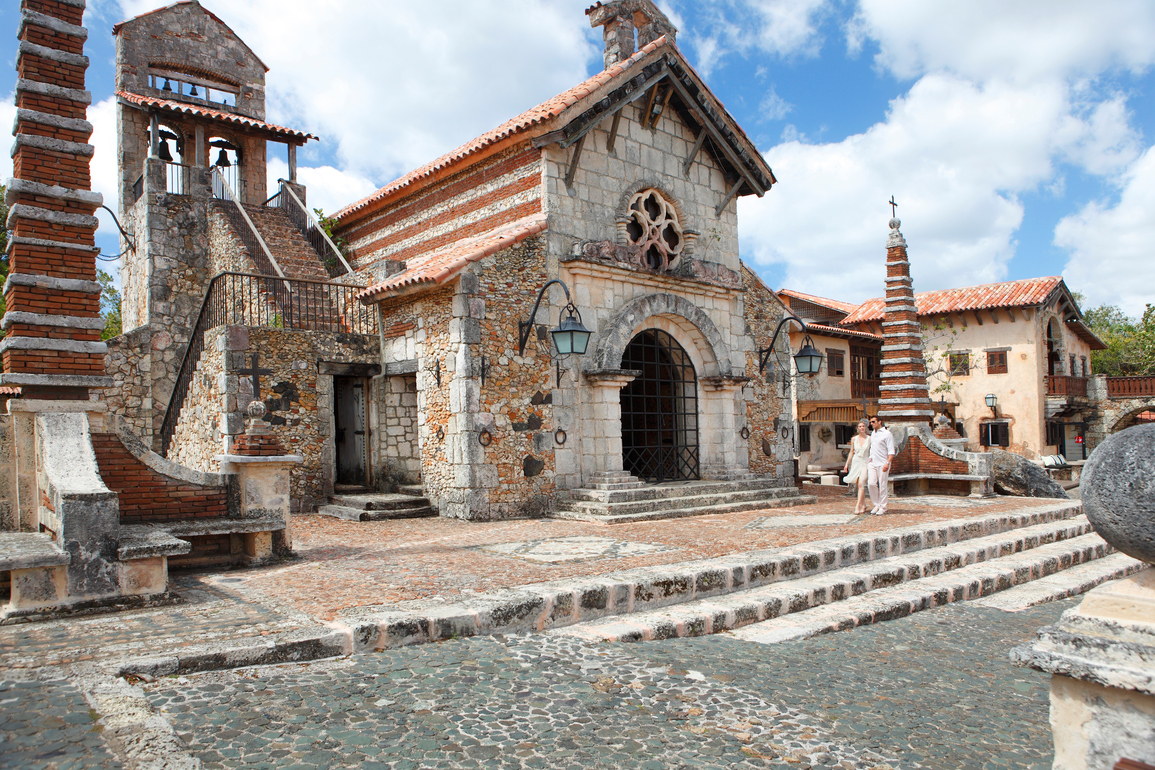 ALTOS DE CHAVÓN
ALTOS DE CHAVÓNSculpted entirely of stone, Altos de Chavón —a model 16th century Mediterranean village—is a delightful place to tour for its charming medieval feel, including plenty of shopping, fine dining, and bars.
BAYAHÍBE
The scenic fishing town of Bayahíbe is an attraction in and of itself; Bayahíbe retains its Dominican pulse, from its local restaurants and bars to its street side arts and crafts stalls, and fishermen who bring catch daily.
CASA DE CAMPO
It is one of the most exclusive and largest resorts in the Caribbean, spread over 30 square kilometers. Villas, restaurants and health and beauty centers abound along the coast, offering a true paradise of relaxation and tranquility on their private beaches. The resort also houses a private Marina located at the beautiful estuary of the Chavon River, where the river flows into the Caribbean Sea. The marina is equipped to provide anchorage for 350 yachts, which she successfully accomplishes, impressing tourists with the fabulous views of these luxury vehicles.
ISLA CATALINA
Catalina is popular for water sports, particularly diving and snorkeling. Portions of the beach welcome cruise ship excursions, but the entire stretch is open for the public to enjoy.
BAYAHÍBE ROSE GARDEN
Walk through a garden filled with the DR’s pink-hued national flower: the Bayahíbe Rose.
ST. STANISLAUS CHURCH
Straight out of a medieval postcard, St. Stanislaus Church—sitting in the heart of Altos de Chavón and overlooking the Chavón River—was consecrated in 1979, and is one of the most beautiful churches in the DR.
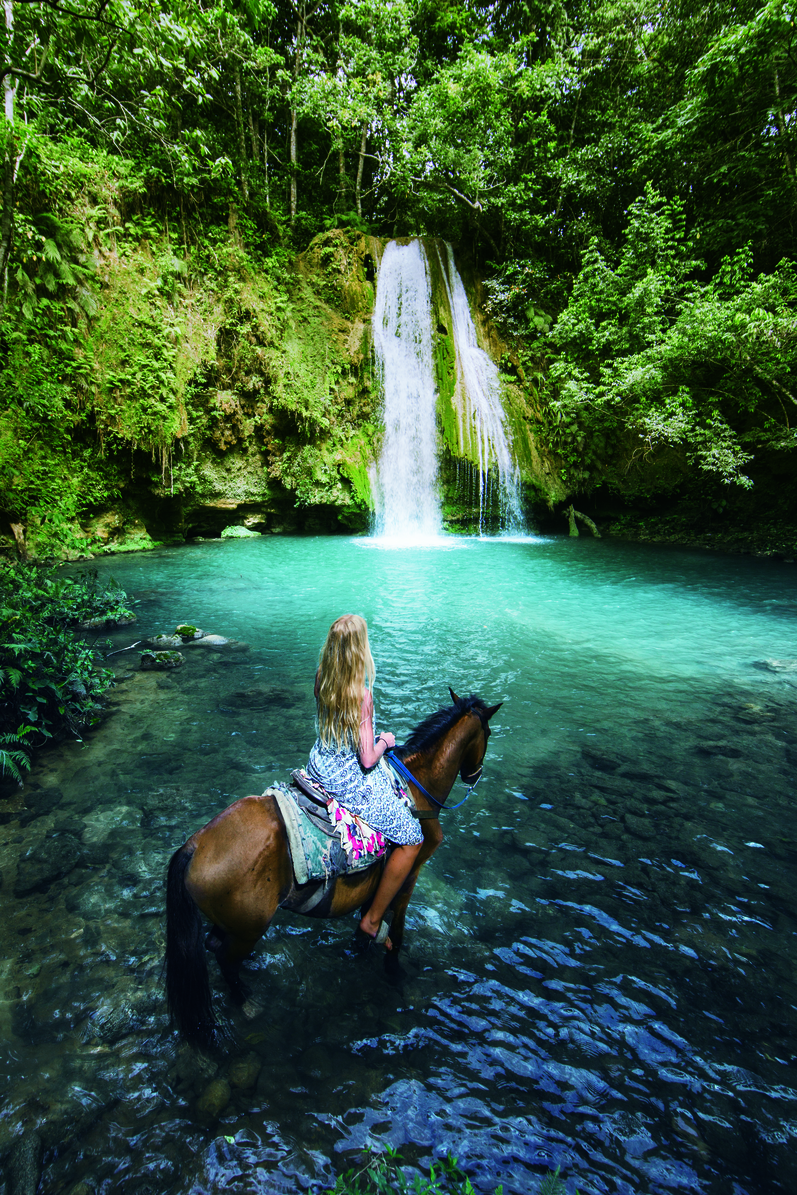 AVENIDA DE LA MARINA
AVENIDA DE LA MARINAThe scenic Samaná Bay wins over every photographer’s eye. This seaside promenade is the heart and pulse of the town of Santa Bárbara de Samaná. Residents and visitors relax on shaded benches facing the bay waters to take in views of anchored boats, ready to whisk visitors and fishers.
SALTO EL LIMÓN
Reaching El Limón waterfall is an adventure that takes you on a 2.5-kilometer (1.5-mile) journey through thick forest, on horseback or on foot down lush hilly terrain, while spotting flora and fauna along the way. You can also go canyoning through El Limón river to reach the falls.
LAS TERRENAS
Las Terrenas is the perfect blend of a dreamy beach village and a cosmopolitan town. Its waterfront boasts multiple stunning beaches, as well as a variety of small hotels, bistros, apparel and arts and crafts boutiques, and lively bars.
HUMPBACK WHALE WATCHING
More than 50,000 people visit Samaná each year to watch the humpback whales during their mating season between 15 January and 30 March.
Thousands of visitors flock to Samaná every year for its chief seasonal attraction: the equally large number of humpback whales that return to court, mate, and birth in the Atlantic waters off Samaná Bay–an area officially declared a Marine Mammal Sanctuary in 1986.
LOS HAITISES NATIONAL PARK
Los Haitises National Park is one of the crown jewels of the Dominican Republic’s national park system. Los Haitises attracts numerous visitors who come here by boat to see its magnificent series of high rock formations; also, it boasts extensive mangroves along its bay, dotted with keys and caves.
CAYO LEVANTADO
The small, picturesque island of Cayo Levantado sits just five kilometers (three miles) from Samaná Bay, and boasts brilliant white sand and palm-fringed beaches. Spend the day swimming, sunbathing, kayaking or paddle boarding, and enjoying fresh fish.
SANTA BÁRBARA DE SAMANÁ
Hugging a breathtaking bay dotted with sailboats and flanked by verdant bluffs, this small waterfront hub retains its fishing traditions, but it’s also an eco-tourism destination thanks to the yearly visit of humpback whales. History and culture are also reflected in the diverse population, cuisine, and architecture.
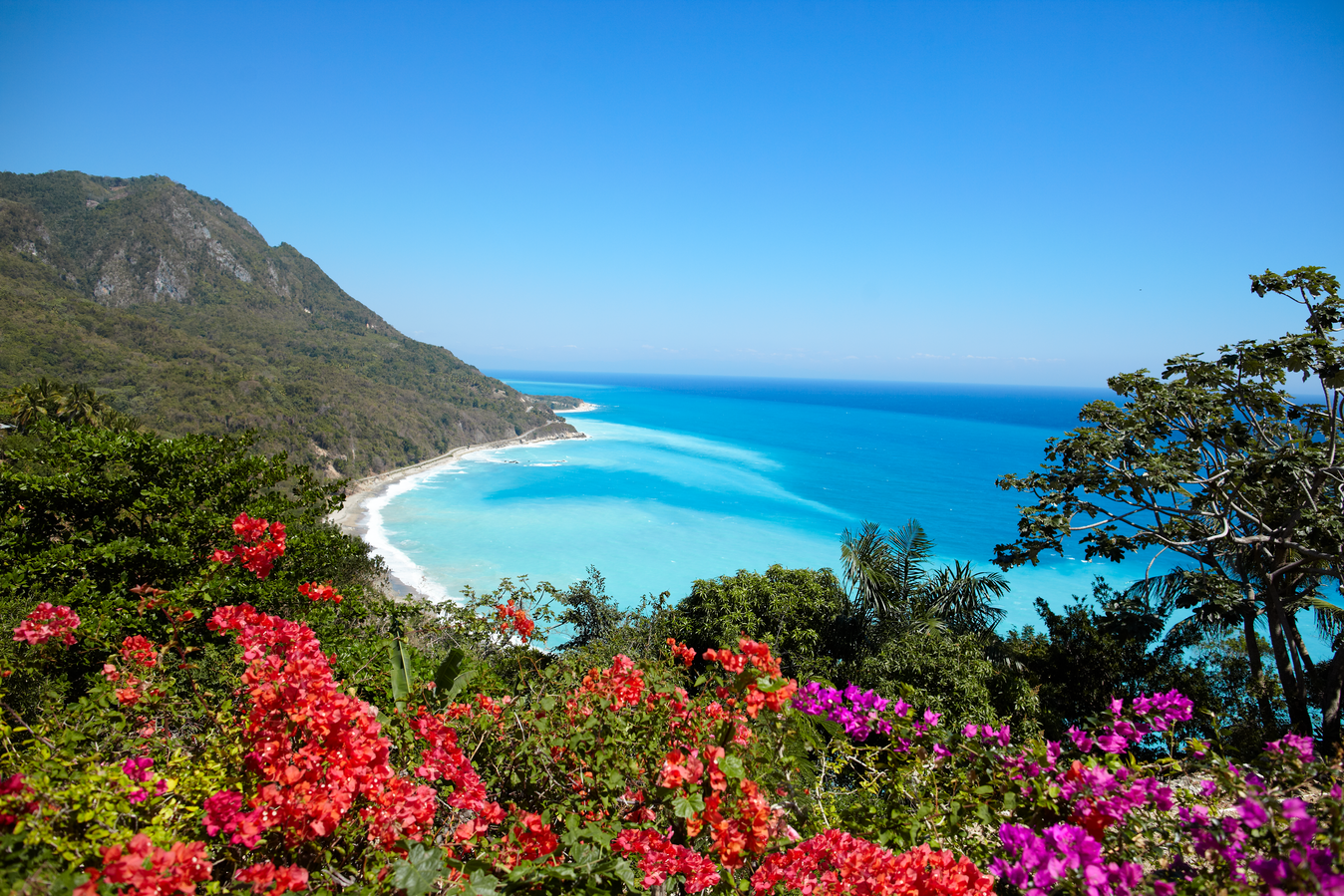 BARAHONA CITY
BARAHONA CITYThe city of Barahona is ideally located near beaches, cold rivers for swims, and is less than an hour away from an array of biodiverse parks, lakes, and mountains.
LARIMAR MINES
In the heart of Bahoruco’s mountains, these mines are the only place in the world where larimar is found–a semi-precious, turquoise-colored stone. Explore the mining area and witness workers climbing back out of holes–running as deep as 40 meters (150 feet)–with raw larimar stones.
BARAHONA ENRIQUILLO COASTAL HIGHWAY
The drive down the Barahona Enriquillo Coastal Highway shows off a sparkling turquoise Caribbean Sea on your left, while the mountains of Barahona tower on the not-so-distant right.
 BARCELÓ RUM HISTORICAL CENTER
BARCELÓ RUM HISTORICAL CENTERVisit the historical center of one of the top rum brands in the country. Know the history of rum making in DR, its role in the culture, Barceló’s manufacturing process, tour the rum barrel storage areas, get to taste the various Barceló varieties of rum.
CUEVA DE LAS MARAVILLAS
This cave houses hundreds of well-preserved Taino pictographs and petroglyphs dating back thousands of years, and impressive samples of stalactites and stalagmites.
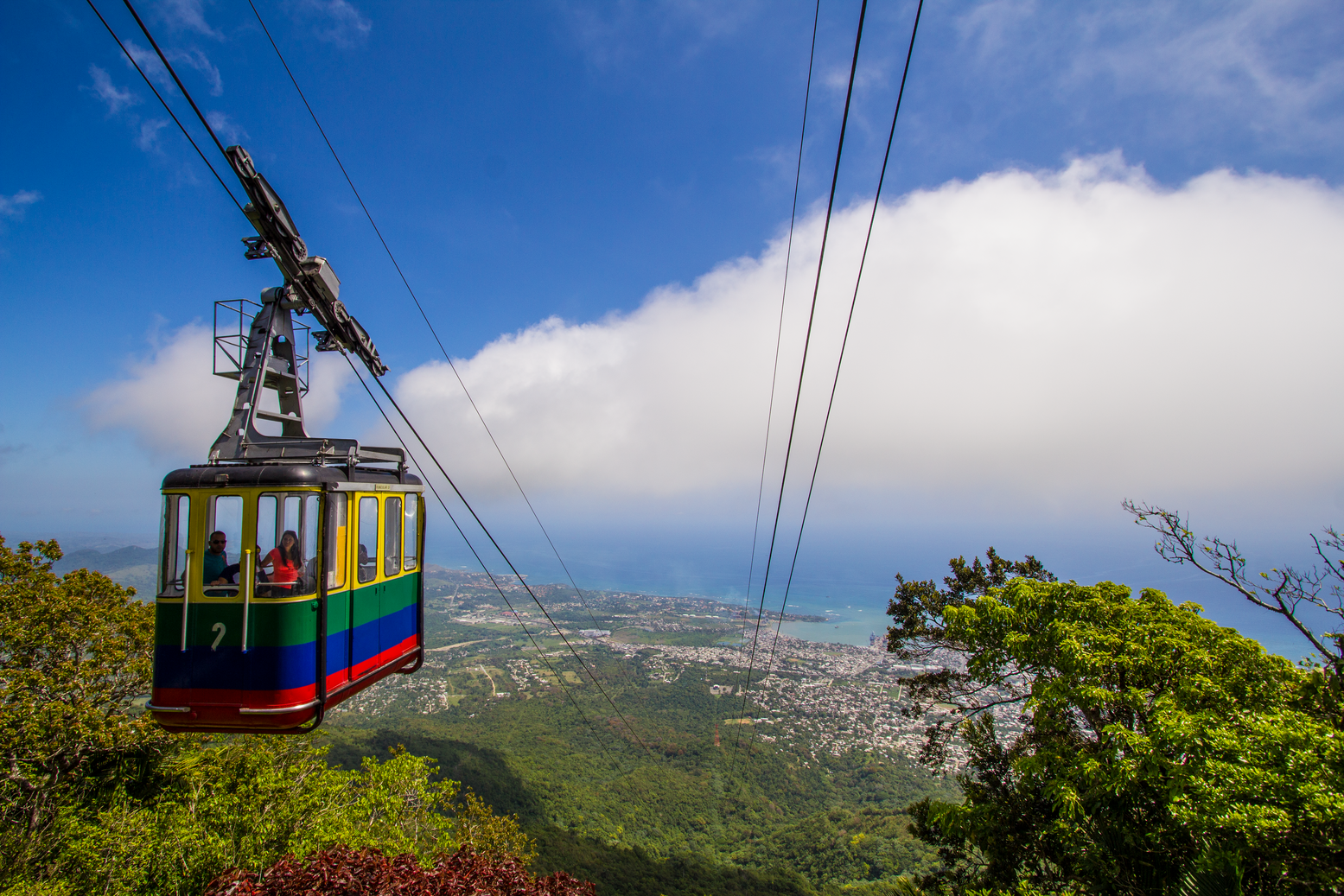 MALECÓN DE PUERTO PLATA
MALECÓN DE PUERTO PLATAOne of the most beautiful seafront boulevards in the DR, with multiple white sand beaches that line the city’s main avenue. Catch a breeze, get a sunset drink, or walk the Malecón’s length all the way from town to Long Beach.
MUSEO DEL ÁMBAR
Some of the DR’s stunning amber stones are displayed here. View closeups of stones containing a near 43-centimeter (17-inch) lizard, a scorpion, a centipede, wasp’s nests, and two beetles mating, all of which date back to 15 to 20 million years
MOUNT ISABEL DE TORRES
Hike your way up or hop on the only cable car in the Caribbean to reach Mount Isabel de Torres, flanked by a giant statue of Christ the Redeemer–one of the province’s iconic landmarks–and standing 793 meters (2,600 feet) above Puerto Plata.
FORTALEZA SAN FELIPE
One of the most important colonial military structures in the Caribbean turned museum, built by Spaniards in the 16th century to defend the DR’s north coast from pirates. Touring the fort reveals the original canons facing the Atlantic, ancient weapons, and numerous hidden chambers.
OCEAN WORLD ADVENTURE PARK
Aside from dolphins, children and adults can enjoy a multitude of marine experiences, from shows with sea lions and nurse sharks to an exotic bird area, and snorkeling in an artificial coral reef aquarium.
LA ISABELA RUINS
Christopher Columbus built the first European settlement in the New World; the settlement’s archeological ruins are still standing in this bay area, including Columbus’s first home perched on a cliff overlooking the Atlantic Ocean, and nearby, the first church.
BRUGAL RUM DISTILLERY
The largest producer of traditionally made rum in the DR since 1888 offers tours of the distillery, including rum tasting and the chance of purchasing well-priced premium rums.
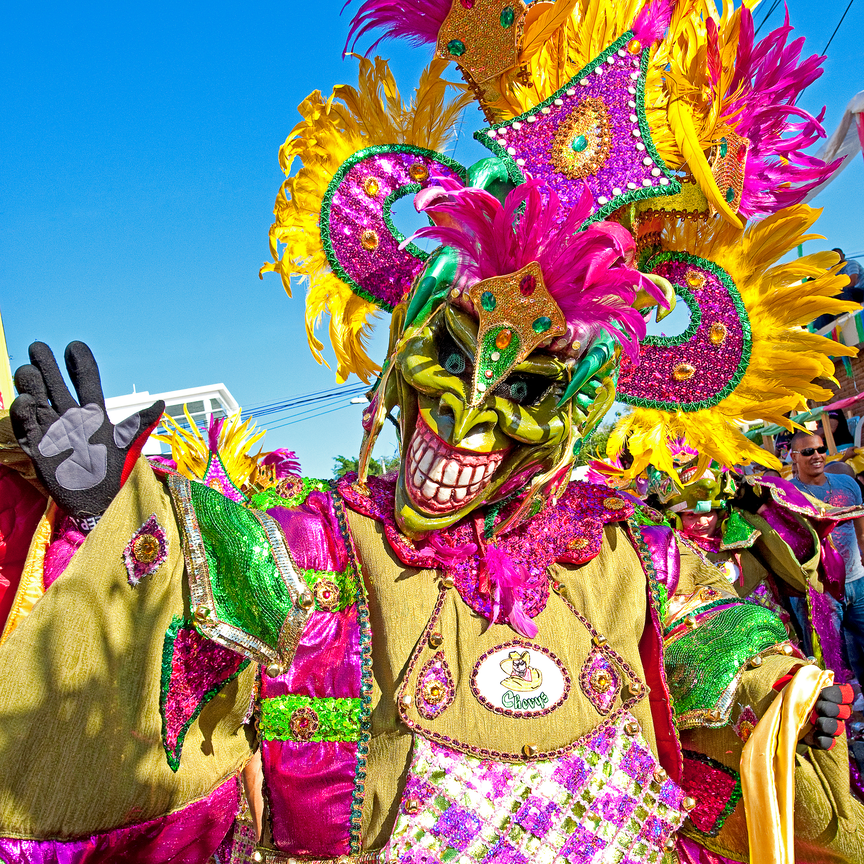 LA VEGA
LA VEGAFamous for hosting the largest, oldest, and most colorful carnival celebration in the country, and home to the two popular mountain destinations of Jarabacoa and Constanza. But La Vega is also home to one of Columbus’ first gold settlements in the Americas.
PICO DUARTE
The highest mountain peak in the Caribbean, rising at 3,087 meters (10,125 feet), Pico Duarte is tucked amid two national parks, and is reachable in two or three-day excursions depending on the chosen route. Hiking to Pico Duarte is definitely one for the Caribbean traveler’s bucket list!
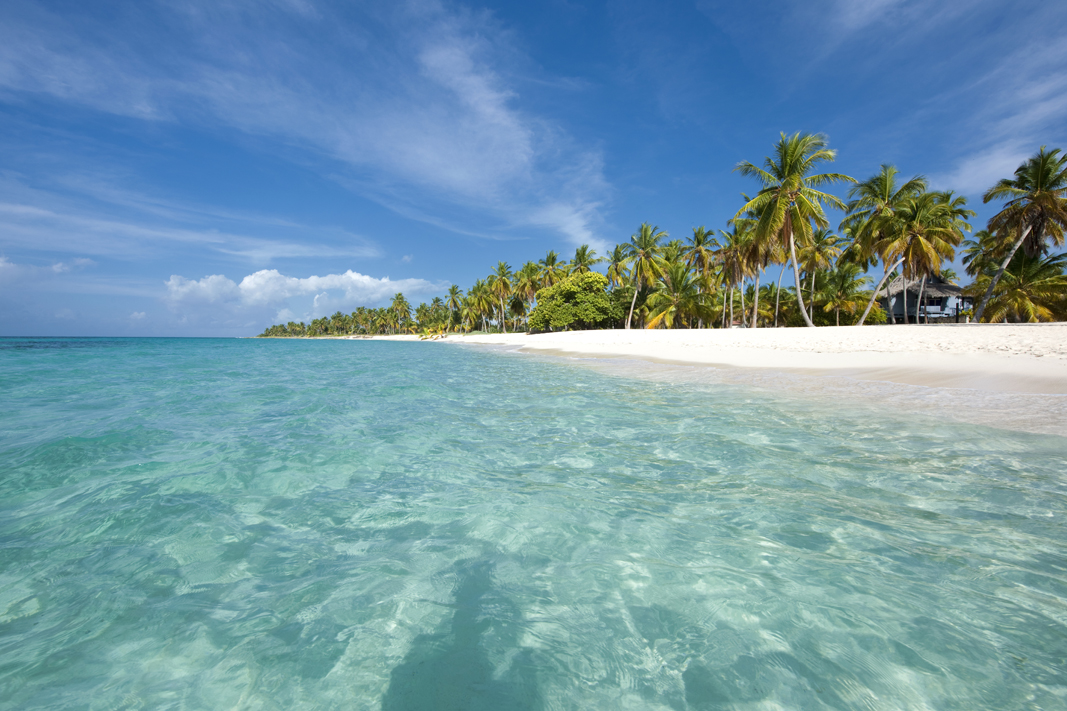 ISLA SAONA
ISLA SAONALocated 19 kilometers (12 miles) south of the mainland, Saona Island’s picture-perfect beaches attract more visitors than all of the country’s national parks combined. A protected site spanning 110km2 (42-square mile) and part of Cotubanamá National Park, Saona is a dream tropical escape, where long stretches of brilliant white sand and their giant coconut trees seem to melt into iridescent turquoise waters. Visitors can take day trips to enjoy the beaches, through a myriad of options ranging from speedboat to catamaran. Riding along Saona’s stunning coastline scenery alone is worthwhile. Most trips leave out of Bayahíbe village, from its small waterfront area. Stops in Saona include a swim at Palmilla, a white stretch with a wide natural pool, and at Mano Juan, the only inhabited portion of the island. Saona Island is also the DR’s most important turtle-nesting site.
CUEVA FUN FUN
Aptly translating as the “double fun” cave, Cueva Fun Fun is located northwest of Punta Cana and offers a hiking and caving expedition that promises adrenaline pumping entertainment. A one-hour hike precedes arrival at the cave’s entrance, on foot or horseback, after which you’ll rappel into the cave, ready with your harness, helmet, and a rope. The adventures continue with a hike through this enormous cavern, filled with stalactites, stalagmites, water in parts and bats. It’s the ultimate cave challenge to add to your bucket list
SCAPE PARK
Families find their bliss here–whether swimming in the Hoyo Azul turquoise cenote, hiking the botanical gardens on site and learning about orchids, ziplining past thick canopy, horseback riding, or driving buggies through the wilderness.
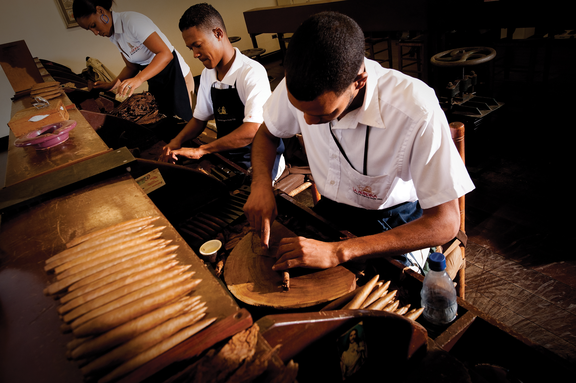 CIGAR CAPITAL OF THE WORLD
CIGAR CAPITAL OF THE WORLDSantiago is the cigar capital of the world, with the largest production of smokes at the many factories. In February every year, the ProCigar Festival is held with organized visits to cigar factories and tobacco field tours to companies operations such as General Cigar, Davidoff, Matasa, La Aurora, Corporación Cigar Export, Tabacalera La Alianza, La Flor Dominicana and the Fuente Foundation. Cigars can be sampled and purchased. Premium cigar smoking is guaranteed
